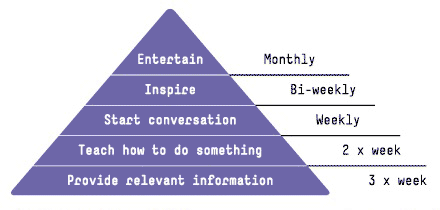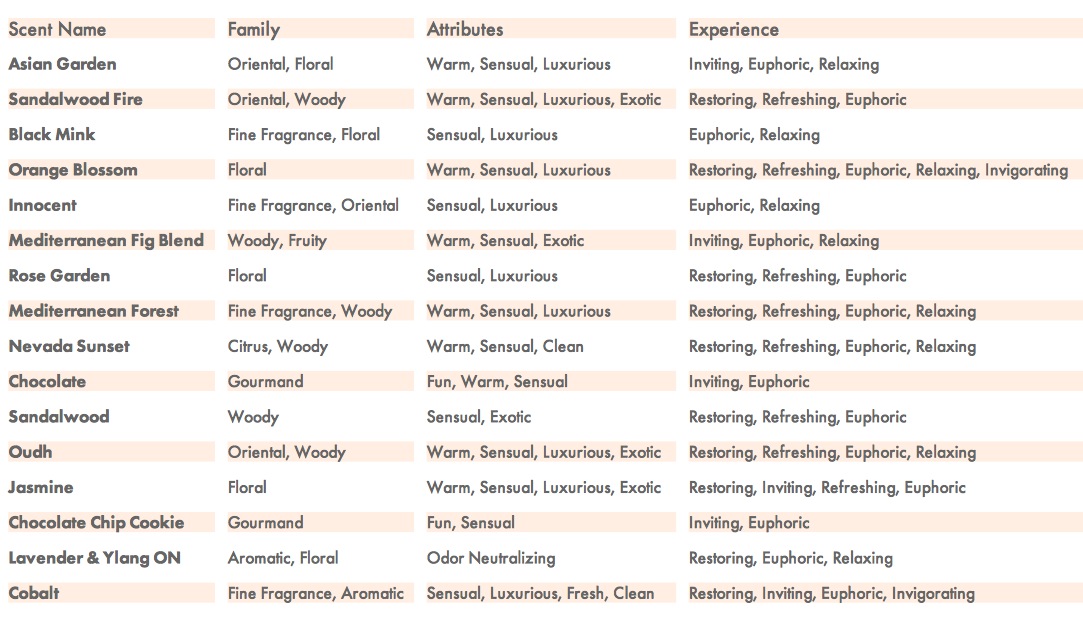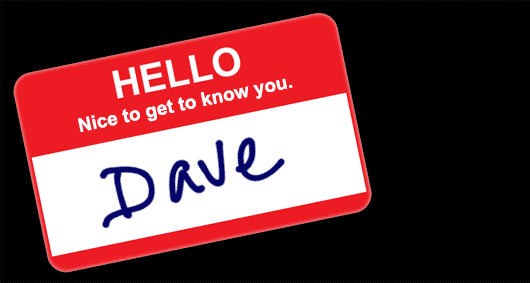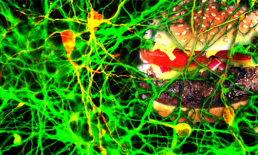2B or not 2B … B2B marketers no longer have any choice
Social marketing has become an inescapable aspect of our daily lives. It’s around us even if we don’t belong to social networks. While business-to-consumer social marketing is well established in the land of retail, business-to-business marketers have been slower to truly harness its potential.
B2B marketers bought into the idea of a Facebook page and a Twitter account, but without a good management plan with allocated resources, it drifted down the to-do list to become a stale and cold place.
The old media talks at people while the new media talks with them.
- ⅔ of people are on the ‘do not call’ list
- almost half of direct mail is never opened
- 99.9% of online banners are never clicked
- buyers wait until they have 60-80% of their research done before looking for vendors.
(Michael Brenner, Senior Director of Global Marketing at SAP)
And forget cold-calls. Nobody enjoys being interrupted by a sneak-attack on the phone.
So what do we do?
“We’re living at a time when attention is the new currency. Those who insert themselves into as many channels as possible look to capture the most value.”
Pete Cashmore, CEO of Mashable
B2B marketers must engage with their target while they are still in the research phase. They need to become knowledge leaders and instill a level of confidence and trust so that when the research is done, they are top-of-mind and possibly even trusted. They need to publish content and pull in customers.
Experts in B2B marketing are suggesting that every marketing campaign needs to involve social. The old ways don’t work by themselves anymore and there are tremendous opportunities for those who do create a solid plan, with resources and with proper follow-through.

A Neilsen survey found that only 1/3 of buyers believe what a brand has to say about itself, while 90% believe what their peers have to say about the brand. This means you must turn your customers into a force of powerful and vocal advocates.
“Social Media is about sociology and psychology more than technology.”
Brian Solis, Principal Analyst at Altimeter Group

With help from Marketo.
Why your Social Media Return is Negative
A couple of years ago, a study revealed that 74% of CEOs think that marketers lack serious credibility due to our talk of “trends” like social media (Fournaise Report).
Marketers are often measuring social media by taking existing measurement protocols and twisting them to try to provide some value to CEOs and CFOs. When the data measured isn’t tied to a company’s bottom line, we look like we don’t get it.
How do we measure word-of-mouth? How do we measure brand-building? Not by awareness.
We are all aware of BP (British Petroleum), but how strong is their brand after the oil pipeline catastrophe? How do we measure our exterior advertising? How do we measure our company president in a room full of prospects? Certainly not by number of business cards collected. We want to know how far he or she has moved a prospect down the sales funnel.
Social media needs to be viewed in the same light. We shouldn't measure social media within the social media channels with Likes and Retweets. Those need to be connected to what the effort cost and what it brought in. Profits.
How well does it engage the prospect? How much value does it provide? Ultimately, how well does it bring in leads? If money is to be spent on social media as part of the marketing plan, it needs to be measured or it will certainly die a slow and misinformed death.
If you are trying to get leads through social media, then you can measure cost per lead, and then maybe, cost per acquisition. As the business value happens on the website and through the email list, measurement should take place there.
Social media posts can be tagged and tracked and followed with Google Analytics. This data can be used to help us measure content, target, channel and process effectiveness.
Nichole Kelly, author of "How to Measure Social Media", says that if you aren’t measuring your social media, your ROI is almost certainly negative. Measure it on balance of profits and expenses and you can turn that around.
Let’s Get Really Social!
Near Field Communications, or NFC, is the real-life version of a Minority Report-like future where ad panels recognized the character played by Tom Cruise, offering tailored products as he walked past.
NFC works via a close-range radio signal, providing contactless communication between devices like smart phones and tablets, or between a device and an NFC chip, or tag. These tags can both deliver AND receive information from your phone.
Uses are endless, from paying for your coffee at Starbucks to getting more information about a product on a shelf.
By taking advantage of the cool new things NFC can bring us, we also open the door to everything from text messages from brands we walk by, to apps triggered on our phones urging us to look at them, to a cereal box calling us by name because we Liked the brand on Facebook.
Information can now be perfectly tailored to you. That means you might get all the nutrient and health benefits from a fruit drink while your spouse may get messaging about getting nutrients quickly on the go; the former because he has searched Google for dieting, and the latter because she is a senior executive with a full schedule.
You could tap your phone to a pair of jeans that you are considering buying and your friends will all get the message. You could instantly Like the brand by swiping a tag behind a Facebook icon. You could swipe an NFC tag to let your friends know that you have arrived somewhere.
Car manufacturers are looking at using NFC to unlock your door and start your car. You could pull up to an NFC tag on a pole and get directions to the nearest gas station or Subway. Other cool uses include linking your headset or printer to your phone with just a touch, or getting premium tour information at a museum with a wave of your phone.
Some hospitals use NFC to tag patients, allowing doctors and nurses to access patient specifics. Another very cool use is called SleepTrak. You strap a small device to your arm to monitor your sleep and then tap the device to your phone to upload to the app for analysis.
Near Field Communications are coming our way quickly, but the fact that it wasn’t offered on the iPhone 5 means many will have to wait. All of Apple’s larger competitors already have NFC technology in a number of their smart phones and many card-swiping devices are set to take advantage of it.
But remember…

Audience? What Audience?

We marketers often ask our clients about their audience. Who is your target audience? What are their demographics? Where do you find them? But that term can be misleading, not only to your customers, but, most importantly, to you.
It is a bit of a stretch to call your customers an audience. Nobody seeks out marketing messages. The term audience may have made more sense in the early days of television and radio, and then progressed to most forms of media, but today, few would attest to being a part of your audience. Audience implies that they have assembled for the purpose of hearing what you have to say.
John Jantsch, author of “The Commitment Engine”, says, “Building a business today means building a community. Now more than ever, we have the technical means to easily build community around shared ideas and shared beliefs, and businesses that, either locally or globally, tap that mindset… are the ones that are truly thriving.”
But most businesses still engage in marketing efforts designed to appeal to audiences. There are systemic benefits to thinking in terms of your community rather than your audience.
Becky McCray, author of “Small Town Rules: How Small Business and Big Brands Can Prosper in a Connected Community”, says, “A lot of what gets labeled as community building online is a lot more like audience building. If you are thinking of it in terms of getting more people to listen to you, rounding up more followers, getting more `likes’, you’re thinking `audience’.”
She goes on, “If you are thinking about connecting them, learning about them, hearing from them individually, and you’re thinking of people, then you are getting a lot closer to community building.”
Matthew Grant of MarketingProfs summed the concept up nicely, “Building community isn’t about you and your product, it’s about connecting the members of the community. Furthermore, building community means upending the audience metaphor and listening to the community. Putting it another way, you need to become the audience of your community.”
An audience is a group of people and we often treat them as just that, a large amorphous group — success is the number of followers on Facebook. We are all individuals and we buy only from companies or sales people that we trust and like. Thinking in terms of individuals in a community is a good step to earning trust and rapport.
A community comes to stay while an audience comes, then leaves. As a business person with clients and targets, I’d much rather become engaged with a community than preach to an audience. A good definition of ‘community’ is a feeling of fellowship with others, as a result of sharing common attitudes, interests, and goals. These are your customers and you should be absorbed in what they are saying and doing.
When you benefit the community, the community returns in kind. Even if not interested in your product or service they pass your name along. And you benefit the community by listening and sharing your knowledge, expertise and opinion. You give first. A community is the greatest asset that you can build as that is where your customers will come from. Give and you shall receive.
Embrace community and embrace the individual. They are there whether you engage with them or not.
We work closely with our clients to build community. Check out our St. Vital Centre Facebook page here and The Forks here.
The Rise of Neuro-Marketing
Ever go into a mall parking lot and smell delicious and tempting food wafting from a restaurant nearby? Ever notice the smell of coconut in the swimsuit shop? And you might not have realized the reasons for the increase in your shopping behaviour after being served a scrumptious food sample. Or that uncharacteristic decision you made after seeing a sexy poster on the wall earlier.
These are examples of neuro-marketing. It’s not new, but it is now well-understood and getting sneakier and sneakier, or as marketers, we should say “better and better”. It’s all about the promise of reward and it is caused by the release of dopamine inside the brain.
We used to think that dopamine caused pleasure, but it took two young scientists (Olds and Milner, 1953), who weren’t quite lab-skilled enough yet, to miss-position their electrodes inside a rat’s brain, not hitting the desired area that causes a fear response. They were trying to zap the rat into the fear response to stop him from pushing a lever which he had been trained to push.
Instead, the rat kept pushing it after every shock. It would push the lever to get a shock. It would even cross an electrified floor, damaging its feet, to get to the lever (poor little guy).
The scientists at first thought that they had a masochistic rat on their hands but then discovered that they had missed the mark and instead hit a spot in the brain that seemed to produce incredible pleasure. They called their new discovery the brain’s “pleasure centre”. But that was not quite right.
Back in those days it was easier to take these experiments into the human laboratory and some other scientists did just that. They replicated the experiment with humans with the result that subjects argued about having to stop pushing the lever and one continued to push it over 200 times without any shock before they finally kicked him out. (This new science led to the practice of brain stimulation for a wide range of mental disorders, all based on assumptions that were not correct.)
They hadn’t discovered the pleasure centre, they had discovered the reward system of the brain, a part of the brain’s most primitive motivational systems, one that evolved to push us towards action and consumption. This…so we wouldn’t get bored in our efforts to attract a mate or go find some more food.
The perfect spot for marketers to play! Down there where the neurons live.

Not only does it propel us to desire something, but it can do so with products we don’t even want. Further, and worse, it can confuse us into doing things we wouldn’t normally have done had our brains not been flooded with dopamine.
We’re not good at distinguishing dopamine’s push to ‘seek’ reward from ‘receiving’ the actual reward itself.
One 28-year old Korean man died of cardiac arrest after playing the Star Craft video game for over 50 hours straight, not eating or stopping for anything. His rush was on full-time. A study found that video game use can lead to dopamine levels equivalent to amphetamine drug use. Dopamine stimulation can cause us to have affairs, to eat the whole chocolate cake, to gamble beyond our normal limits and to become addicted to porn sites.
Dopamine also makes you susceptible to unrelated types of temptation. Exotic images can help us to make bad financial decisions and the hope of winning the lottery can make us overeat. Dopamine neurons make us alert, awake and captivated, ready to buy grocery items that we had never expected to buy. The tasty food sample. as we enter the store, sets our brain in gear to buy more than we intended to. Dopamine appears to let us loose. Inhibitions are lessened and super-powers are improved.
Interestingly, dopamine neurons are less responsive to familiar rewards. Makes sense. That’s why Starbucks keeps changing up their menu and why McDonald’s keeps adding new food items. They also craft their recipes with the right combination of sugar, salt and fat to get our dopamine neurons running amuck. A client, a Canadian regional restaurant manager of a global fast food chain once said to us that salt is their secret ingredient, giving us the craving to go back to his restaurants every two to three weeks. Guess which one that was.
And some of these companies are piping simulated food odours from vents near their buildings, all to increase dopamine levels. A company named ScentAir specializes in this. One of their clients, Bloomingdales, uses baby powder in the maternity department to speak to a mother’s memory. They use coconut in the swimwear area and lilac in the intimate apparel section. At Christmas, you’ll smell sugar cookie, chocolate and evergreen.

The above screennshot is from ScentAir’s website. Does “Euphoric” actually mean dopamine inducing?
Lotteries use dopamine in the form of “imagine what you could do with one million dollars”. You get excited. The bells ringing, lights flashing, half-naked women servers, cheap or free liquor and all-you-can-eat buffets are also big dopamine spikers. Stores put their most tempting items front and centre to get your levels up on arrival.
As dopamine causes us to seek reward but not to reward us, it also causes frustration and anxiety. Marketers use this feature best with Door Crasher specials, Limited Quantities Only, and short-term bargain sales. Our primitive hunter/gatherer instinct kicks in with a dopamine rush and we head out to reduce this anxiety.
Because we have trouble distinguishing the desire for reward from the actual reward, dopamine causes us to continue to pursue things that don’t make us happy. One woman found that when she wanted to feel good, she would go shopping, as many of us do. She enjoyed the ride there and felt good entering the mall and enjoyed the window shopping, but she felt rushed in the store and felt a time pressure to pay and get out.
The dopamine worked to make her feel good about the pursuit of the reward, but the getting of the reward was not rewarding. This happens to us all in many ways. Dieting, drinking too much, not exercising, flirting, watching pornography, gambling and going to the dollar stores for one thing and coming out with ten “bargains”. Not great for customer retention you’d think, but it seems to keep working. She decided to stick with window-shopping and was much happier when she realized that the thrill ended there.
So, dopamine, and the seeking of rewards, are confusing the heck out of us without us knowing, and making us sitting targets for marketers. But, it also makes us marketers that much more penetrating and effective. It is used with military precision and is incredibly successful.
You can train yourself to notice it, and when you do, you can diminish its effects, but few are ever aware of it happening to us. And it lurks around every corner.
With a lot of inspiration and logic from a book called “The Willpower Instinct: How Self-Control Works. Why it Matters and What You Can Do to Get More of It”, by Kelly McGonigal, Ph.D.

The Changing Face of Marketing
And we're talking serious change. Advertising targeting has been, well, for the most part, about defining your audiences and then finding media that they pay attention to. It’s been that way since we started in this business over twenty years ago.
Even many of the relatively new social media and online advertising models work in much the same way. With Facebook, for example, advertisers select from a variety of personal characteristics that equate to a variety of individuals and then Facebook presents your ad to them.
Facebook thought it could go deeper and deeper with its depth of targeting via more and more boxes to check off. That’s that whole breach of privacy and Big Brother thing. It sounded good to us, being in advertising. The more you know about a target person, rather than a target audience, the better you should be able to speak to the individual with your advertising.
Now, Facebook has begun selling ads in a whole new, very different way that lays waste to the data they have collected on all of us over the years. The new way is called “Re-Targeting”.
New to them anyways, but not so new to many other online ad companies. It makes so much sense in the age of digital and online purchasing.
Here’s how “Re-Targeting” works…
You shop around on the web for some exciting new thing you desire. Let’s say a weight-loss program. You check brands and products all over the web and pretty soon you are seeing weight loss ads everywhere you go.

You have probably experienced that before. Amazon, Yahoo! and Google do it to you on their own sites. The way they know what you are shopping for is via cookies that are dropped into your computer by the weight-loss sellers and these cookies tell the ad servers all about your plans to lose weight. You’ll also be hit by exercise equipment and diet plans and everything that the cookie can tell the ad server that you are potentially shopping for.
The odd thing is that Facebook just recently picked up on it as a new strategy for their ad sales. And these ads are worth much more than the old traditional online ads (“old” these days can be the day before yesterday!) because people click on them a lot more and are actually in need of the product, so they buy a lot more. And re-targeting uses none of that privacy data that Facebook collected on us.
Re-targeting should mean new growth for Facebook, but they are behind the curve. All that data I put onto Facebook doesn’t come close to positioning me as needing a new wrist watch. But my time spent searching the entire web for one sure does.
For more, see Nicholas Carlson’s article on Business Insider.




